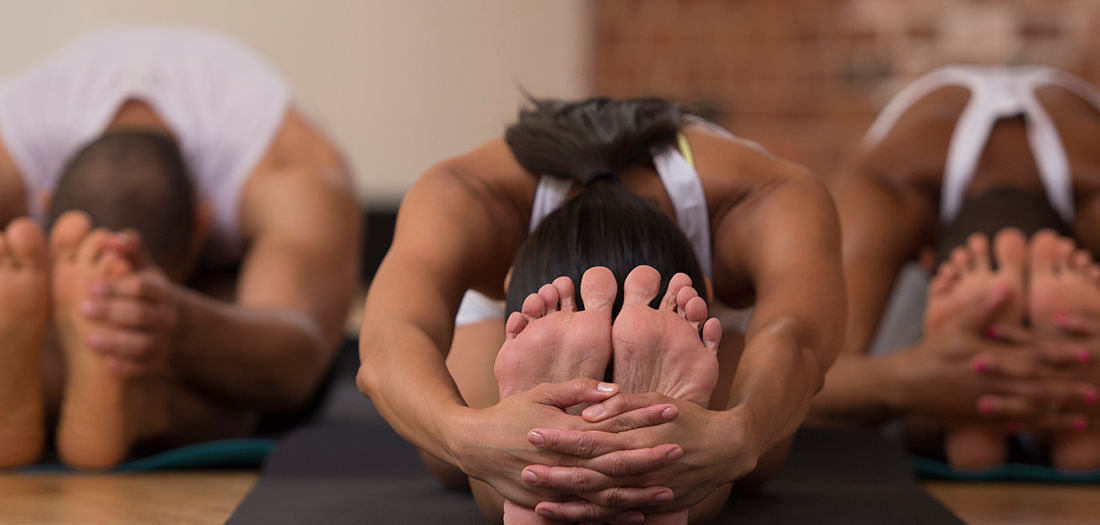Given the exponential growth in the number of yoga practitioners in the U.S., as reflected in the 2016 Yoga in America Study, it’s no surprise that there are many newly trained yoga teachers. If you fall into this category and you’re eager to begin sharing the gift of yoga with others, there are some key points to keep in mind as you embark on this exciting new journey, as I recall doing nearly 13 years ago. To offer you the best possible guidance, I asked experienced yoga educators from around the country to share their wisdom.
1. Commit to your personal practice

In order to most effectively serve your students, it’s imperative that you also remain a committed yoga student. “When individuals graduate and become registered yoga teachers, their focus often shifts as they become entrenched in teaching classes and spending time focused on preparing for those classes,” says Jane Bahneman, E-RYT 500, co-owner of Blue Nectar Yoga in Falls Church, Virginia. “Keeping up a regular practice not only provides an opportunity to relieve the stresses associated with the dynamics of being a new yoga teacher, but it also serves as an incredible opportunity to listen to experienced teachers’ refined cueing and to experience their thoughtful sequencing.”
2. Surround yourself with great people
One of the best ways to bolster your teaching abilities is to immerse yourself in your local yoga community, shares Erika Faith Calig, E-RYT 500, founder of Cloud Nine Yoga Schools. “As a new teacher it’s important to get involved and to attend regular classes and workshops in your local area.” Calig stresses the importance of networking with other yoga teachers and also the value in learning from those who are a bit more seasoned in their teaching. “Find an experienced teacher who inspires you and become a humble observer, quietly watching as they teach classes,” says Calig. “Take notes about sequences or stand-out cues and develop thoughtful questions about their personal journey. You can also offer any help they might need, as establishing sincere rapport with these teachers can serve as a doorway to future opportunities.”
3. Truly get to know your students

As a new teacher, it can feel a bit overwhelming to find the perfect music and to plan the best sequence with the right words to go along. But it’s important not to lose sight of what you are really there for, which is to guide and serve students on a deeper level. “I see many new teachers caught up in ‘getting in right,’ as it relates to the technical skills of sequencing and cueing, which are undeniably important,” says Bahneman. “However, the experience of being a yoga teacher becomes so much richer when we simply recall why we took that seat in the first place, which is to share the joy of yoga and the profound impact that the practice can have on the human spirit.” Developing rapport with students on a personal level and allowing them to see us teachers as humans ultimately creates an environment that is welcoming, accepting and truly transformative. “It seems like the more we appropriately get to know our students, the more we realize we are on the journey together,” shares Bahneman, “And for the new teacher the nerves organically settle and we can begin to feel more comfortable being our authentic selves when we are holding space for others in the yoga room.”
4. Offer inclusive classes
In addition to understanding biomechanics and basic alignment principles, it’s crucial to offer progressions and regressions of each pose in order to best serve a wide variety of students, says Claudia Micco, E-RYT 500, YogaFit master trainer and wellness program coordinator for The Ritz Carlton Spa and Resort in Kapalua, Maui. “Providing modifications allows your students to let the pose fit their bodies without trying to force or strain into a position.” In addition to adapting the postures to allow for steadiness in each pose, Micco also recommends that teachers utilize positive and inclusive language to create a memorable, multi-level experience that is rooted in empathy and compassion. “As teachers, it’s imperative that we practice ahimsa, or non-violence, in our thoughts, actions and speech,” notes Micco. “There’s no place for negativity in a yoga class.”
5. Understand what you are teaching

While it can be tempting to want to start immediately sharing everything you read and learn about, seasoned yoga teachers caution new teachers against assuming an expert role or teaching things they do not yet deeply understand. Stacy McCarthy, E-RYT 500, creator of the Yoga Body DVD series and author of Transformational Teaching Through Yoga Adjustments, suggests that you always be ahead in your own practice of whatever you plan to teach in a class, and to always understand the what and the why behind what you’re offering to students. “When we graduate with our 200-hour yoga teacher training certificate we may teach something in the way we were taught how to do it without really questioning or understanding the why behind it,” says McCarthy. “As we evolve our personal practice, gain experience teaching classes, and continue our personal studies through workshops, reading materials and other endeavors, we can truly become teachers and understand the how and the why behind the material. We can then offer the information in a way that engages students and meets them where they are, while also ensuring their safety and preserving the intention and the tradition of the teachings.”




 by
by 










 by
by